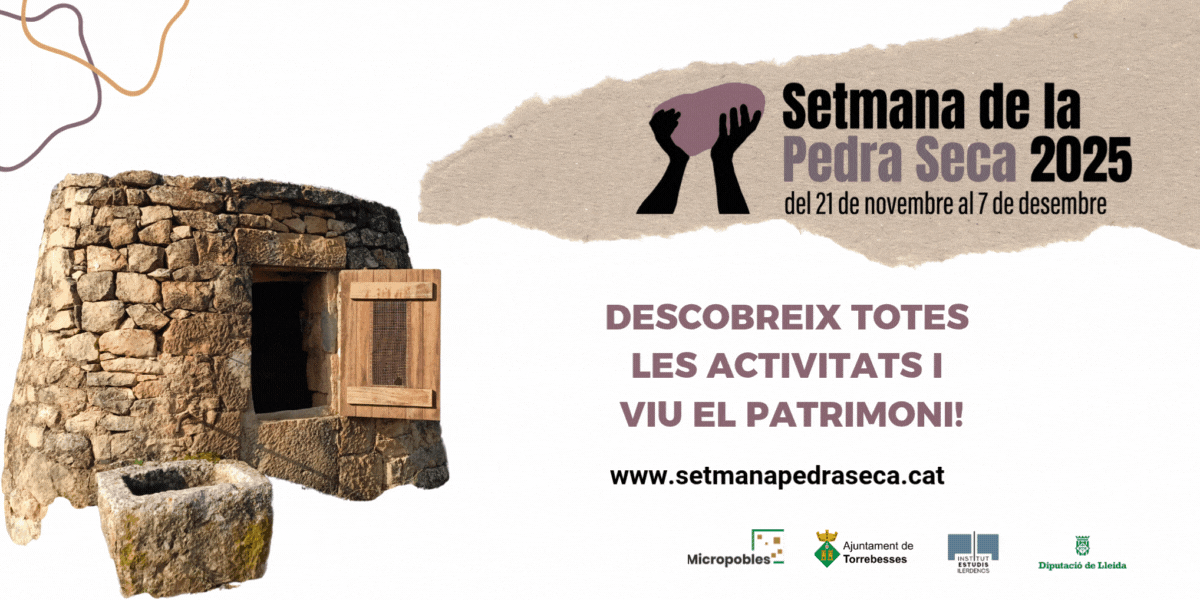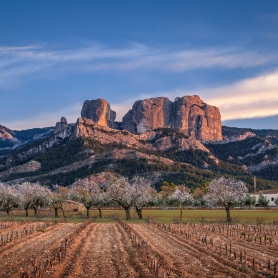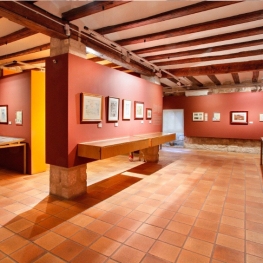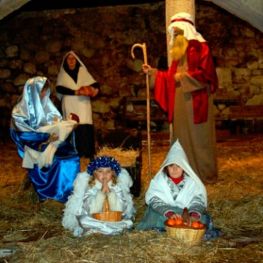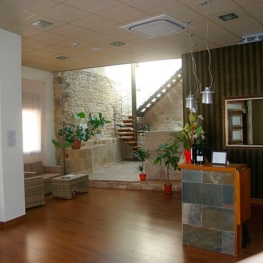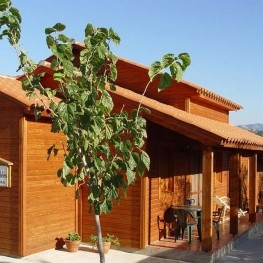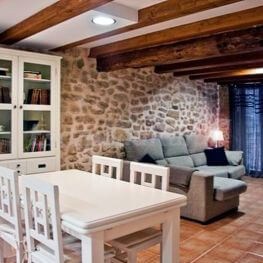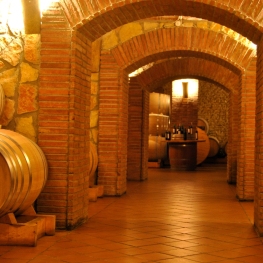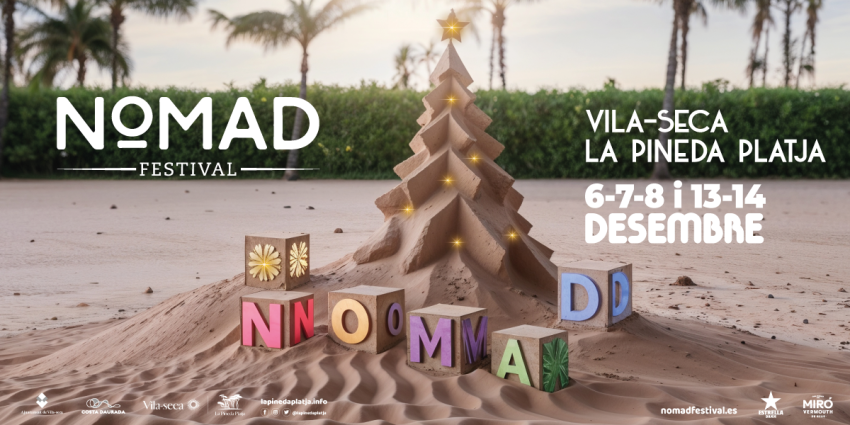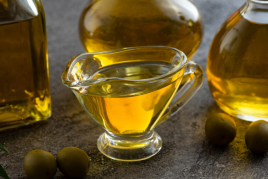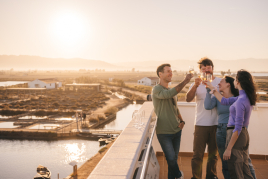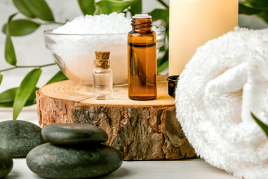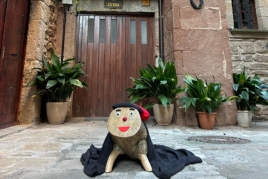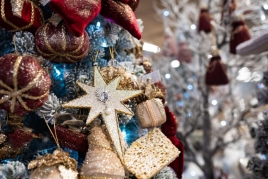Picassian places in Horta de Sant Joan
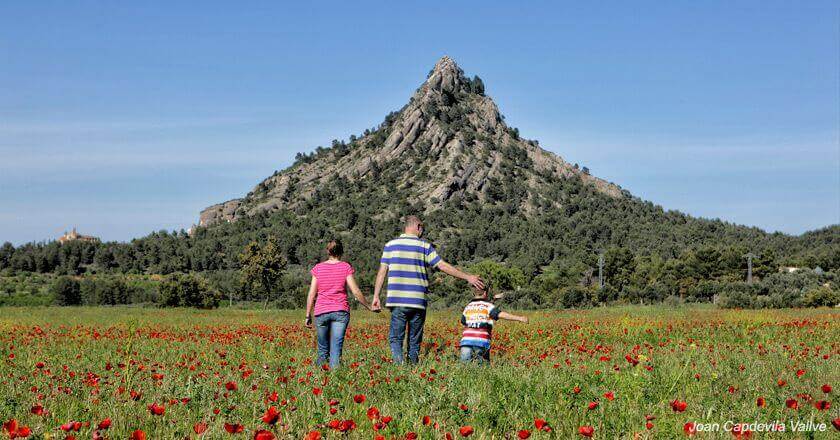
Picasso brings to Horta de San Juan a great element of cultural heritage.
There are many visitors who come attracted by the international projection that the artist has left us with his two stays.
Picasso arrived in Horta de San Juan for the first time in 1898 at the hands of Manuel Pallarés, a young artist from the town, to cure himself of scarlet fever. After their first excursion to the top of Santa Bárbara, they project the adventure of retiring to paint in the Ports for a month.
His stay in Horta lasted 9 months, but the deep ties that united him with this land and these people made him return a second time in 1909 in search of inspiration and accompanied by his fiancée Fernande Olivier. That second stay corresponds entirely to the moment of his great cubist adventure and the works he painted are scattered all over the world. Picasso mentions the People wherever he goes and is represented in many of his works.
The places in Horta that relate this town to Picasso can be visited and seen while taking a walk through the town and its surroundings. All of Horta is a Picasso place. The streets, the squares, the houses... were captured by the brilliant eye of the artist.
The Trumpet Hostel
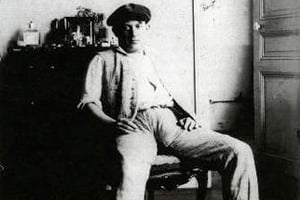 In the Plaza de Misa was the Hostal del Trompet, where Picasso and Fernande Olivier stayed in the summer of 1909.
In the Plaza de Misa was the Hostal del Trompet, where Picasso and Fernande Olivier stayed in the summer of 1909.
In this second stay, his partner Manuel Pallares did not accompany him and his mother did not let him stay at her house because Picasso and Fernande were not married. That is why they stay at the Trompet hostel, run by Antonio Altes.
One of the best-known anecdotes is the one that explains that Picasso went out on the balcony to scare away some Puritan women from the town who were making a fuss because the couple were not married, which was inconceivable at the time.
The study
Picasso, in his second stay, immersed in what has become a new artistic movement, locked himself in a studio that his friend Tobías Membrado, the baker, left him in the attic of the house.
This studio is located in the same square as the church. The painting that begins here is more mental than sensory work, that is, it does not copy what it sees but deforms, enhances and cuts what is in front of it.
The works he painted in Horta are decisive in marking Cubism as we know it today. When leaving, Picasso gave two paintings to Tobias.
Nothing has ever been known about these works of art, probably, without foreseeing what the painting of these times could represent, they were thrown away or parked in an attic.
The Plaza de la Balsa and the Factory
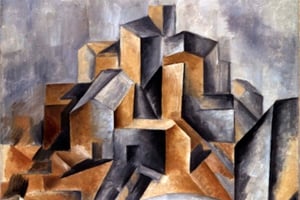 Picasso returns to Horta in 1909 and spends four months there. He does so accompanied by Fernande Olivier and a camera that immortalized the first images of Horta.
Picasso returns to Horta in 1909 and spends four months there. He does so accompanied by Fernande Olivier and a camera that immortalized the first images of Horta.
La Bassa, what is now Plaça de Catalunya, was a place that collected rainwater where animals would drink on the outskirts of the town and where oil and flour mills were located. Picasso, on this second visit, invented what he immediately called cubism. From the square and looking towards the top of the town, Picasso sees in Horta the geometric drawing that inspires him to paint paintings such as The Factory and the Raft.
City Hall
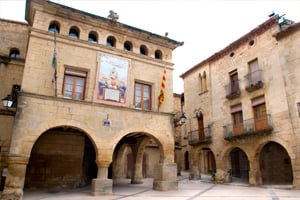 Aware of what Picasso represented, the City Council dedicated a street to his name in 1967 and called him Horta's adoptive son. Two years later, the mayor of the time and the pharmacist decided to visit Picasso to thank him for everything he had done for Horta.
Aware of what Picasso represented, the City Council dedicated a street to his name in 1967 and called him Horta's adoptive son. Two years later, the mayor of the time and the pharmacist decided to visit Picasso to thank him for everything he had done for Horta.
At 87 years old, 60 years after his second visit to Horta, Picasso decided that he would give some of his works so that they could be exhibited in some space in the town. The two visitors returned to Horta very excited and went to work adapting the attic of the Town Hall to exhibit the works. Picasso delegated everything to his friend Pallarés and it was his son who prevented this exhibition from taking place.
With the death of Picasso in 1974 and that of Pallarés the following year, Horta lost the opportunity to have the "Museo Picasso-Pallarés".
The bar
Picasso and Fernande also interact with people from Horta and participate in local customs and traditions. They met at night in Joaquin Antonio Vives's tavern to play dominoes. They used to be seen there until early morning.
Fernande was also going and that was a scandal for the time. In addition, Fernande used to win quite a few games and earned money that in Horta she could not spend on anything, as can be seen in one of the many letters that the young Frenchwoman sent to her friends.
The Picasso Center
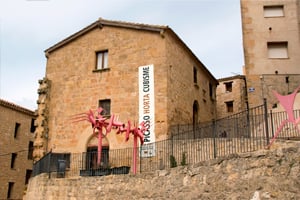 In 1992, the Picasso Center was inaugurated as a museum, housing different facsimile works by Picasso. Little by little different exhibitions and works corresponding to the stages of apprenticeship, evocations and cubism have been recovered with the aim of showing the strong affective and plastic links between the artist and Horta de San Juan.
In 1992, the Picasso Center was inaugurated as a museum, housing different facsimile works by Picasso. Little by little different exhibitions and works corresponding to the stages of apprenticeship, evocations and cubism have been recovered with the aim of showing the strong affective and plastic links between the artist and Horta de San Juan.
Santa Babara
The Santa Bárbara mountain was the first place that Picasso and Manuel Pallarès went to as soon as they arrived in Horta, at the end of June 1898. They spent a few days in a mountain cave, surely there they decided to spend August, in the Ports where the young painter recovers. The Santa Bárbara mountain was painted by Picasso in both the first and second rooms, when he made several cubist visions.
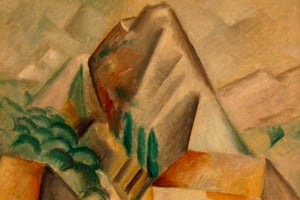
One of the first paintings that Picasso painted during his second stay in Horta was a Cubist painting of the Santa Bárbara mountain, triangular in shape and presiding over one of the most visible landscapes from the town.
The mountain and the convent that we can see at its feet are an emblem at an architectural and sentimental level for the people of Horta, as well as being an unavoidable point of visit for all those who pass through the town.
After ten years, he returns a second time and returns to this space to project Fernande's sexuality on this mountain.
The convent of San Salvador
The Convent of San Salvador, at the foot of the Santa Bárbara mountain, was also painted by Picasso. We highlight the oil The procession to the Convent.
Picasso's Cave
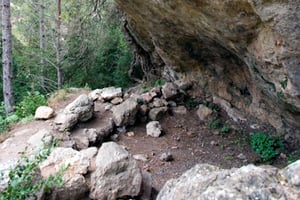 On Picasso's first visit to Horta, the young Picasso and Pallarès entered the Ports area and set up a cave that served as a refuge for shepherds as a place to stay.
On Picasso's first visit to Horta, the young Picasso and Pallarès entered the Ports area and set up a cave that served as a refuge for shepherds as a place to stay.
With four groceries and some canvases to paint nature, they spend a month living in an almost wild state. Pallarés was a great connoisseur of the territory and watched over the two during those days in the Ports. Picasso never forgot that experience and his friendship with Manuel lasted 75 years.
From the space they occupied as a bed, today a small route leads through the forest and a stream that makes you relive and imagine the experience that changed the genius painter.
More of Taffetas
In the Mas de Tafetanes, Picasso and his friend spent a few days during the wheat harvest. Picasso painted an oil painting of the little house and made several drawings and sketches of the farmers at work.
Town Hall of Horta de Sant Joan
What to do
Museu Centre Picasso a Horta de Sant Joan
Horta de Sant JoanThe Picasso Center in Horta is a permanent tribute to Picasso. Its…
Pessebre Vivent de Jesús
Tortosa (a 21.9 Km)Living nativity scene represented in movement and voice, from the Catalan era…
Where to eat
Restaurant Hotel Nou Moderno
Vilalba dels Arcs (a 19.8 Km)Hotel restaurant to enjoy the tranquility of Terra Alta and try the…
Where to sleep
Apartaments Les Valletes
Arnes (a 6.5 Km)Les Valletes Apartments are located in Arnes, a charming municipality in the…
Ca la Leonor
Bot (a 8.1 Km)Rural house from 1880, renovated in 2012, preserving the original wooden beams…
Enoturisme Celler Piñol
Batea (a 15.3 Km)Celler Piñol is a family winery located in Batea, dedicated to producing…
Restaurant Hotel Nou Moderno
Vilalba dels Arcs (a 19.8 Km)Hotel restaurant to enjoy the tranquility of Terra Alta and try the…

